Best Database Tools to Buy in December 2025
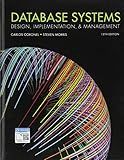
Database Systems: Design, Implementation, & Management


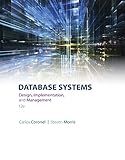
Database Systems: Design, Implementation, & Management


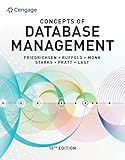
Concepts of Database Management (MindTap Course List)


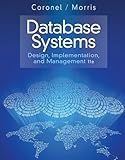
Database Systems: Design, Implementation, & Management



Bioinformatics for Beginners: Genes, Genomes, Molecular Evolution, Databases and Analytical Tools


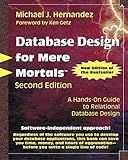
Database Design for Mere Mortals: A Hands-On Guide to Relational Database Design



Data Mining: Practical Machine Learning Tools and Techniques (Morgan Kaufmann Series in Data Management Systems)
- EXCLUSIVE 'NEW' FEATURES: STAND OUT FROM COMPETITORS TODAY!
- LIMITED-TIME OFFER: EXPERIENCE THE LATEST INNOVATIONS FIRST!
- ENHANCED PERFORMANCE: ELEVATE YOUR RESULTS WITH 'NEW' TECHNOLOGY!


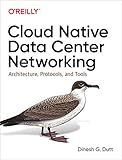
Cloud Native Data Center Networking: Architecture, Protocols, and Tools



The Manga Guide to Databases (The Manga Guides)


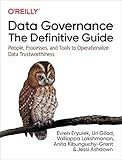
Data Governance: The Definitive Guide: People, Processes, and Tools to Operationalize Data Trustworthiness


To properly unwind an array in MongoDB, you can use the $unwind operator in the aggregation pipeline. This operator deconstructs an array field from the input documents to output a document for each element in the array.
You can include the $unwind operator in the aggregation pipeline like this:
db.collection.aggregate([ { $unwind: "$arrayField" } ])
In this example, "collection" is the name of your collection and "arrayField" is the field that contains the array you want to unwind.
Keep in mind that when using the $unwind operator, each document in the output will contain only one element from the original array. This can result in an increased number of documents in the output, so consider the performance implications before using $unwind on large arrays.
Additionally, you can include other operators in the aggregation pipeline along with $unwind to further shape and manipulate the data as needed.
What is the role of $unwind in MongoDB's aggregation framework?
In MongoDB's aggregation framework, the $unwind operator is used to deconstruct an array field from the input documents to output a document for each element in the array. This is useful when you want to perform operations on each element of an array separately in a pipeline.
For example, if you have a collection of documents with an array field "tags" containing multiple values, you can use $unwind to create a separate document for each tag in the array. This allows you to perform operations like grouping, counting, or sorting on individual elements of the array.
Overall, the $unwind operator helps to flatten nested arrays in documents, making it easier to work with and analyze the data in MongoDB's aggregation framework.
What are some common mistakes to avoid when unwinding arrays in MongoDB?
- Not checking if the array field exists before trying to unwind it: It is important to first check if the array field exists in the document before trying to unwind it. This can be done using the $exists operator in MongoDB.
- Unwinding an array multiple times: Unwinding an array multiple times can lead to duplicated documents in the result set. It is important to be careful with the order of your operations and ensure that you only unwind an array once.
- Unwinding large arrays: Unwinding large arrays can cause performance issues in MongoDB as it creates a separate document for each element in the array. It is important to consider the size of the array before unwinding it and look for alternative solutions if needed.
- Not using the $unwind operator correctly: The $unwind operator in MongoDB is used to flatten arrays, but it should be used in conjunction with other operators like $match, $group, and $project to achieve the desired results. Not using the $unwind operator correctly can lead to incorrect or unexpected results.
- Not using indexes on the array field: If you frequently unwind arrays in your queries, it is a good idea to create an index on the array field to improve the query performance. This can help MongoDB efficiently process queries that unwind arrays.
What is the impact of using $unwind on memory usage in MongoDB?
Using $unwind in MongoDB can increase memory usage, especially when unwinding arrays with a large number of elements. This is because $unwind creates a separate document for each array element, which can result in the creation of a large number of new documents in memory. The increase in memory usage can lead to performance issues, especially for queries that involve unwinding large arrays.
It is important to carefully consider the impact on memory usage when using $unwind in MongoDB, and to optimize queries where possible to reduce the strain on memory resources. This might involve limiting the size of arrays being unwound, or using indexing and other performance tuning techniques to improve query efficiency.
What is the best way to handle null values when unwinding arrays in MongoDB?
One common approach to handling null values when unwinding arrays in MongoDB is to use the $ifNull operator in the projection stage of the aggregation pipeline. This operator allows you to replace null values with a default value of your choice.
For example, let's say you have a document with an array field that may contain null values, and you want to unwind the array while replacing any null values with a default value of "N/A". You can achieve this using the following aggregation pipeline:
db.collection.aggregate([ { $unwind: "$arrayField" }, { $project: { arrayField: { $ifNull: ["$arrayField", "N/A"] } } } ])
In this pipeline, the $ifNull operator checks if the value of the arrayField is null. If it is null, it replaces it with the default value "N/A". This way, you can ensure that null values are handled gracefully when unwinding arrays.
Alternatively, you can approach this by using the $unwind operator along with the $match operator to filter out null values before unwinding the array. Here's an example:
db.collection.aggregate([ { $match: { arrayField: { $ne: null } } }, { $unwind: "$arrayField" } ])
In this pipeline, the $match operator filters out documents where the arrayField is null before unwinding the array. This can be a more efficient approach if you want to skip null values entirely during the array unwinding process.
What are some best practices for optimizing array unwinding in MongoDB?
- Use the $unwind operator in aggregation pipelines to deconstruct arrays before performing any operations on the data. This allows MongoDB to efficiently process individual array elements.
- Avoid nested arrays or deeply nested structures wherever possible, as they can increase the complexity of unwinding operations and lead to poor performance.
- Use the $project stage to only include the fields that are necessary for the query and exclude any unnecessary fields, which can help reduce the size of the data being unwound.
- Utilize indexes on array fields that are frequently unwound to improve query performance. Indexes can help MongoDB quickly access and retrieve the required array elements.
- Consider restructuring your data model if array unwinding is a frequent and critical operation in your application. Denormalizing data or using embedded documents can sometimes improve performance compared to having arrays.
- Monitor query performance and optimize the query execution plan using the explain() method to identify any inefficiencies in the unwinding process.
- Use the $limit and $skip stages in aggregation pipelines to limit the number of documents processed during array unwinding, especially when dealing with large arrays.
- Take advantage of MongoDB's query optimization features, such as the $match stage to filter out unnecessary documents early in the aggregation pipeline before unwinding arrays.
- Keep your MongoDB server hardware and software up to date to benefit from performance improvements and optimizations introduced in newer versions.
